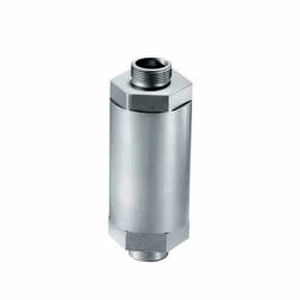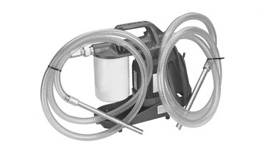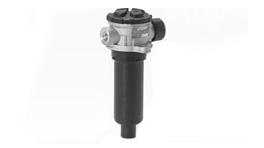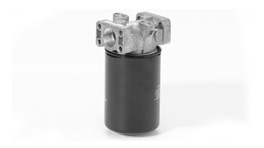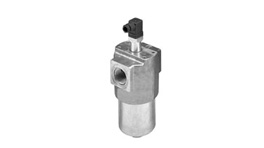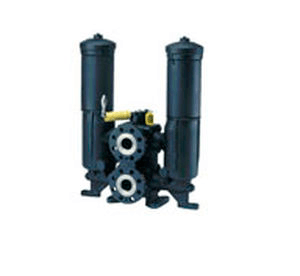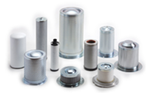Hydraulic Filters Information
 Hydraulic filters remove contaminants from oils, emulsions, and other hydraulic fluids. They are integral parts of a hydraulic system. The purpose of such a system is to actuate a hydraulic cylinder (also known as a hydraulic motor) using pressurized hydraulic fluid.
Hydraulic filters remove contaminants from oils, emulsions, and other hydraulic fluids. They are integral parts of a hydraulic system. The purpose of such a system is to actuate a hydraulic cylinder (also known as a hydraulic motor) using pressurized hydraulic fluid.
A basic hydraulic system consists of several components:
- A reservoir for hydraulic fluid, which allows power transmission to be transferred through the system. Hydraulic fluids are typically oil- or water-based and ideally have little or no compressibility.
- A filter to remove foreign contaminants.
- A pump to move hydraulic fluid through the system.
- Lines (tubes, pipes, and/or hoses) to transport the fluid to and from the hydraulic cylinder.
- A control valve to extend or retract the cylinder.
- Finally, a hydraulic cylinder, which provides linear motion.
These components are shown in the diagram below; in this image the hydraulic filter is labeled as "oil strainer." This system also provides certain additional safety features, such as a relief valve and a pressure relief line in case of overpressure.
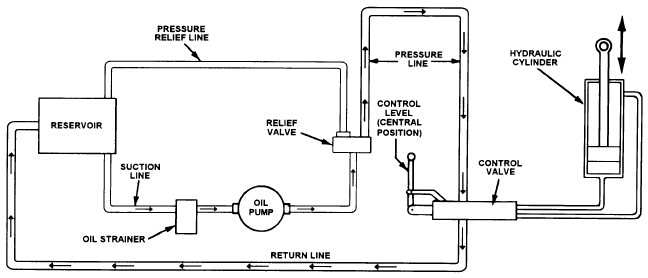
A hydraulic system. Image credit: Integrated Publishing
 Note the position of the hydraulic filter in the image above. The purpose of the filter is to remove contaminants from the fluid as it is cycled back to the fluid reservoir via the return line. Despite the fact that an ideal hydraulic system is equipped with seals and other protective devices, contaminants may enter the system in the event of system maintenance (ie removal of a cap or seal) or seal failure. By filtering the fluid after its return to the reservoir, any contaminants accumulated from the previous cycle are removed, resulting in clean fluid for the following cycle. In some systems the hydraulic filter is located within the reservoir itself, or just before the reservoir on the return line.
Note the position of the hydraulic filter in the image above. The purpose of the filter is to remove contaminants from the fluid as it is cycled back to the fluid reservoir via the return line. Despite the fact that an ideal hydraulic system is equipped with seals and other protective devices, contaminants may enter the system in the event of system maintenance (ie removal of a cap or seal) or seal failure. By filtering the fluid after its return to the reservoir, any contaminants accumulated from the previous cycle are removed, resulting in clean fluid for the following cycle. In some systems the hydraulic filter is located within the reservoir itself, or just before the reservoir on the return line.
Hydraulic systems are very common in heavy equipment, manufacturing equipment, and other systems that require linear movement. These systems are advantageous in that they can provide power transmission regardless of the distance between the input and output, and that they do not require mechanical equipment such as gears, levers, or pulleys. A large piece of equipment such as a backhoe uses numerous hydraulic cylinders to operate; a small portion of a backhoe's hydraulic system — namely the cylinders to control the bucket and dipper — is shown below. The tube labeled (2) would connect to the pump, filter, and reservoir assembly.
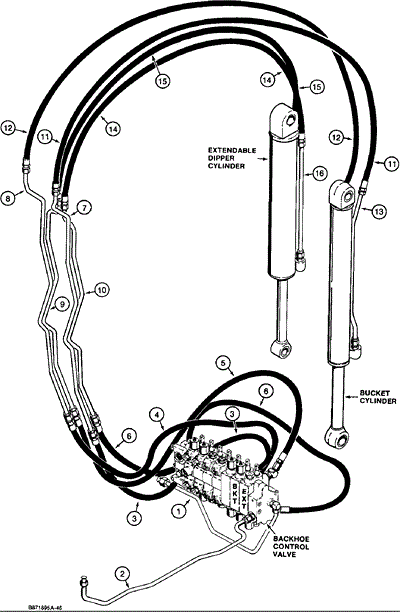
Image credit: Coleman Equipment
Importance of Hydraulic Filters in a System
Modern hydraulic systems run at increasingly high pressures and faster cycle times; as both of these attributes increase, so too does the system's sensitivity to contamination. Fluid contaminants are a leading cause of hydraulic system failure and can cause numerous problems, including:
- Mixing of unintended incompatible fluids, causing fluid breakdown and leading to acid corrosion.
- Internal leakage, lowering component (pump, motor, valve) efficiency and accuracy.
- Particle buildup in critical areas, leading to sludge which causes parts to stick.
- Particle buildup in close-tolerance areas, leading to component seizure.
The obvious solution to preventing these problems is to prevent contaminant particles from cycling through the system. Therefore a clean, efficient filter is absolutely critical to a hydraulic system.
Hydraulic Filter Construction
Most hydraulic filters are cylindrical devices with openings for fluid input and output in opposite sides of the filter. Fluid is typically directed through channels in the filter housing and passed through the filter media. The media then collects the contaminants and the cleaned fluid passes through a central channel between the filter media, making its way to the output. The contaminants remain stuck within the filter media; when the filter is full to capacity, a switch often triggers an LED or other visual indicator to announce that the filter needs to be changed. A cutaway view of a typical hydraulic filter is shown below; in this case, the filter's clogged status is indicated by the position of a simple piston.
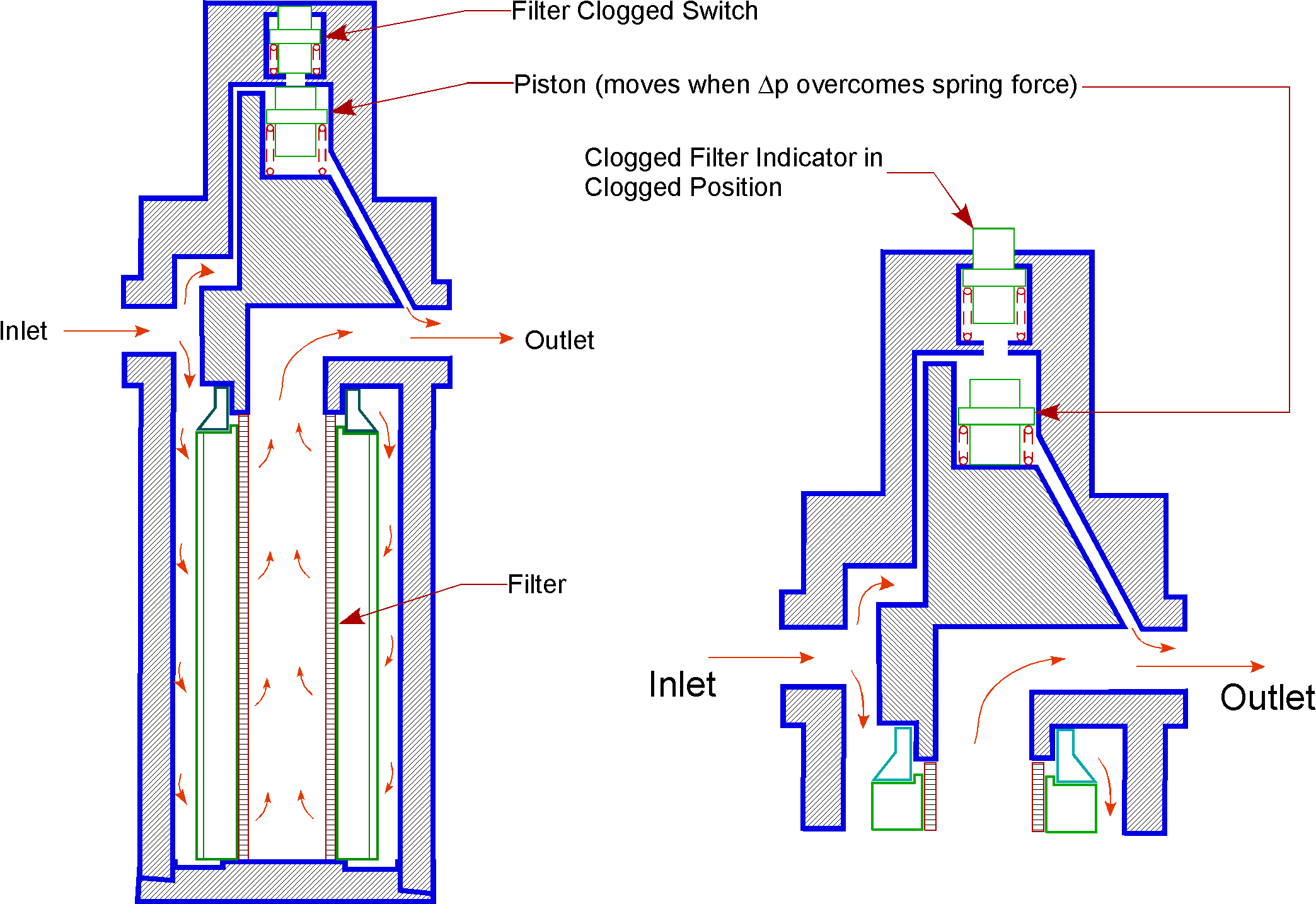
Image credit: Design Aerospace LLC
Specifications
Selection Criteria
 Before selecting a filter type as described below, an engineer must determine the specifications and details of the hydraulic system. Some important variables include:
Before selecting a filter type as described below, an engineer must determine the specifications and details of the hydraulic system. Some important variables include:
- hydraulic fluid type and operating pressure
- fluid flow per cycle
- ideal resistance of the filter
- amount of contaminant the filter is expected to contain for a set amount of time
- ideal cleanliness of the fluid
Types
Hydraulic filters are often classified by where they are designed to be placed in a hydraulic system. The table below describes common filter types.
Filter type |
Description |
Applications |
Image |
In-line |
Placed directly on the fluid line; may be suction side (before the pump) or pressure side (after the pump but before valves and cylinders); inlet, outlet, and media are aligned. |
Pressure side – high pressure fluid
Suction side – lower pressure
|
|
Off-line |
Consists of a separate pump and filter linked directly to the reservoir; often used to supplement main system filters. |
Systems without continuous flow; systems where return flow volume is too great; lower pressure fluid. |
|
Tank |
May be positioned on or within the fluid reservoir; may have an accessible head on the tank exterior for easy access and media replacement. |
Low pressure systems; machine tools, forest harvestry equipment, and casting machines. |
|
Spin-on |
Consists of an in-line head screwed onto a threaded canister; easy to install and economical.. |
Systems without flow surges; low pressure systems. |
|
Return line |
Filter is placed directly on return line; can also be spin-on, in-line, or tank-mounted. |
Systems where pumps need the most protection; economic; casting machines, drilling rigs. |
|
Duplex |
Actually a valve/filter assembly permitting flow to two separate filters in order to maintain flow during filter maintenance. |
Continuous flow systems; critical hydraulic systems. |
|
Image credit: Direct Industry | Eaton
Product Form Factor
Hydraulic filter products come in a variety of form factors. Most buyers installing a filter for the first time will select a complete filter, including the filter housing as well as the filter element. Those looking to replace a worn-out or expired filter element may purchase the filter media/cartridge separately without also having to replace the housing. Additionally, buyers may also select a housing — a simple enclosure that directs fluid through the filter media — if need be.
Full vs. Partial Flow
Filters may be specified as full flow or proportional (or partial) flow.
Full flow simply means that contaminated fluids cannot bypass the filter and contaminate the system. In other words, all fluid that enters the unit must pass through the filter media. As the filter element accumulates contaminants the filter's flow resistance increases.
Partial flow means that a portion of fluid is permitted to bypass the filter with each cycle. By constantly recirculating the fluid, eventually all fluid in the system will be filtered and free of contaminants.
Standards
Hydraulic filters may be manufactured, tested, or used based on various standards. Common filter standards include:
- ISO 16889 -- Hydraulic fluid power — Filters — Multi-pass method for evaluating filtration performance of a filter element
- ISO 2941 -- Hydraulic fluid filters - Filter elements - Verification of collapse/burst pressure rating
References
Baldwin Filter - Hydraulic filters (pdf)
Image credit: Applied Industrial Technology | US Water Systems
PRODUCT CATALOG
CONTACT US
- Address: 988th. Chengguan Industry Zone, Qinghe, Hebei Province.
- Phone: +86 16768092617
- Email: Filters@Hydrautech.net

